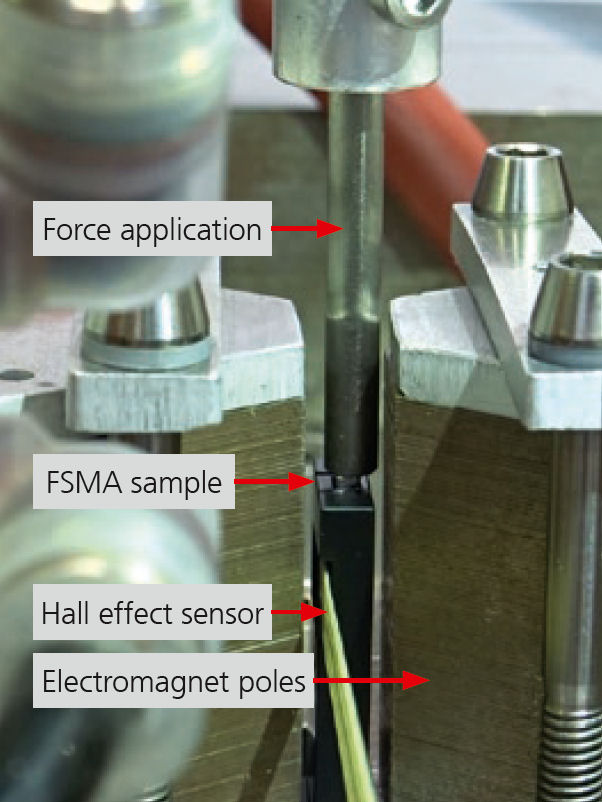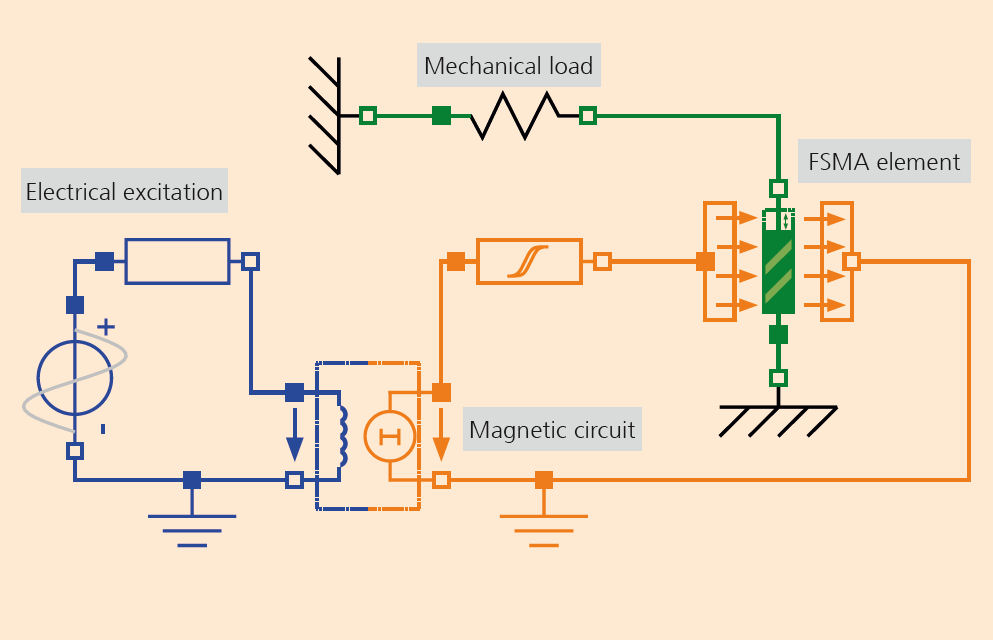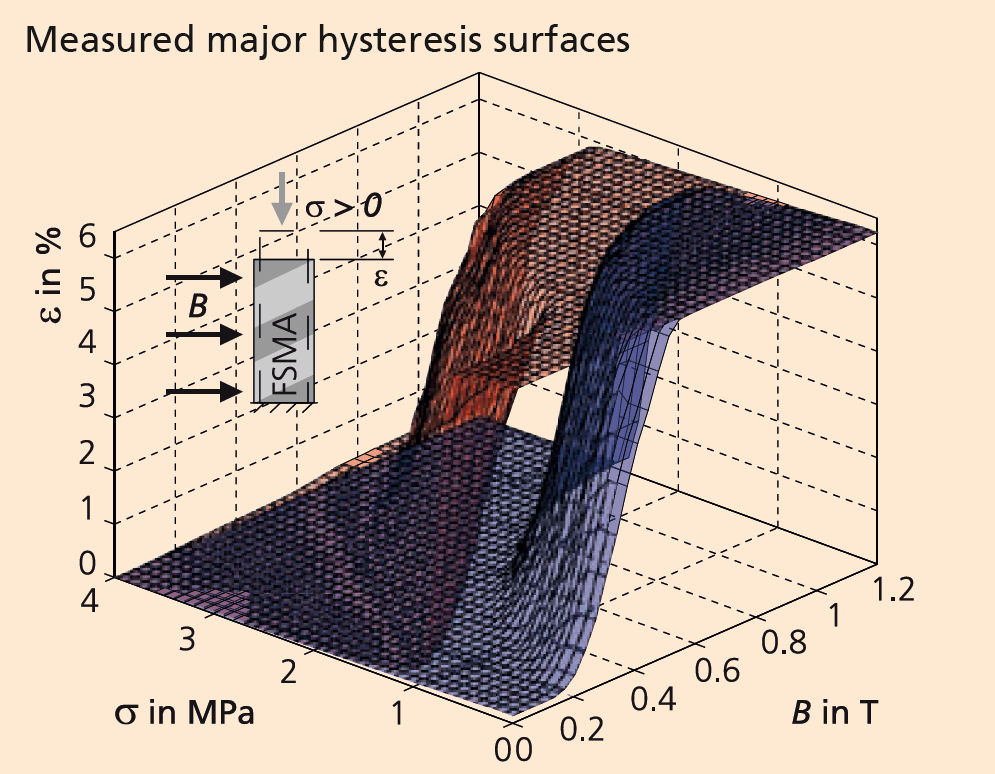
Model-based design of fast-switching solid-state actuators for valves
Current research



Numerous industrial applications require fast-switching pneumatic valves to control air flow within milliseconds. Some of the typical applications are pick-and-place, separation tasks or the pneumatic emergency stop of an entire production line. Commonly used valves based on solenoids are limited with regard to size, switching time and fatigue life. Within the grant project “SMS2.0”, funded by the German Federal Ministry for Education and Research (BMBF), Fraunhofer IKTS is currently investigating the potential of ferromagnetic shape memory alloys (FSMA) for these and other applications. Alloys are metallic single crystals with a twinned lattice structure of reduced symmetry and high saturation magnetization. Extrinsically induced magnetization results in a strong magneto-mechanical coupling. The lattice structure aligns with the external field and the FSMA actuator changes its length. This process of twin boundary movement is very fast, leading to the potential application of FSMAs for fast switching actuators. Compared with conventional electromagnets, however, alloys behave in a fundamentally different way, characterized by strong non-linearity and distinct hysteresis. Therefore, models are necessary for the design of FSMA-based systems. At Fraunhofer IKTS, such models are currently being developed by characterizing crystals experimentally and deriving application-oriented models from that. FSMA crystals are characterized on a self-developed magneto-mechanical test bench (Figure 1). It allows to apply and measure any desired magnetic and mechanical trace. Within the project a scalar macroscopic modeling approach – currently a two-input Tellinen model – is used. Its main advantage is the possibility to parametrize directly from the major hysteresis surfaces (series of major hysteresis loops) measured, which limit the overall work range (Diagram). The hysteresis models are implemented in Modelica, a modeling language for multiphysics modeled with lumped elements. In this way, interaction with other system elements, such as control electronics, the magnet system, and non-linear mechanical load, can be examined (Figure 2).

The method shown is currently being applied for the design of pneumatic valves with adapted magnetic excitation and valve mechanics, with switching times below 1 ms being attained.

